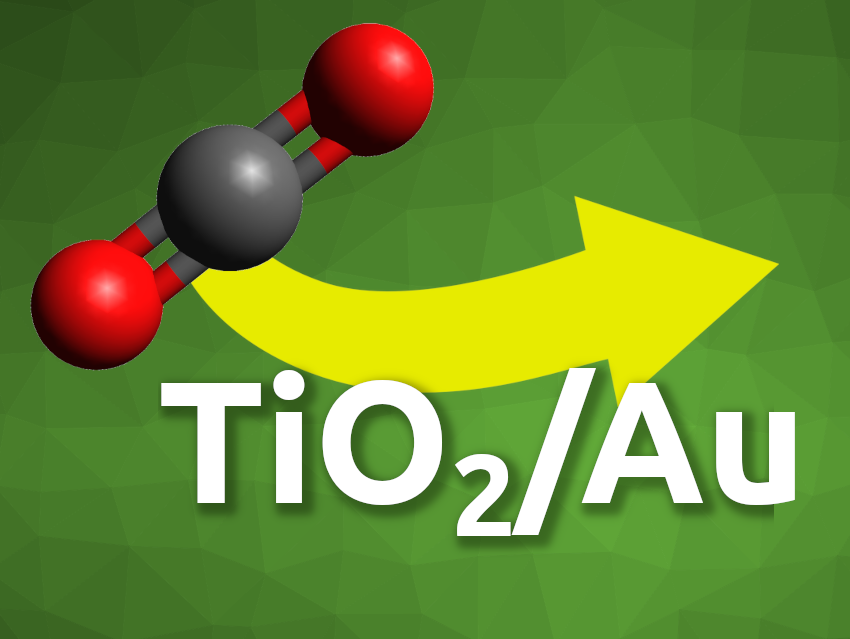Converting the greenhouse gas CO2 into useful products using renewable energy is a promising approach for a more sustainable economy. The electrochemical reduction of CO2, for example, is interesting in this context. However, CO2 is relatively inert, and suitable, highly active, and selective electrocatalysts are needed for such reactions. Nanostructured materials can provide large specific surface areas and good access to active sites, which is useful in the development of catalysts.
Leanne D. Chen, Aicheng Chen, University of Guelph, Canada, and colleagues have developed a method for the facile synthesis of TiO2/Au nanocomposites that can act as electrocatalysts for the reduction of CO2. The team used a galvanic replacement reaction (GRR) approach with a mixture of TiO2 nanoparticles, HAuCl4, and zinc powder. In an aqueous solution, the gold ions were reduced by the zinc powder and deposited on onto the TiO2 nanoparticles. The resulting composite was removed from the reaction mixture by centrifugation and residual solid zinc was removed using an HCl solution.
The researchers investigated the electrocatalytic activity of the TiO2/Au nanocomposites for CO2 reduction in aqueous solution. They found improved catalytic activity compared with polycrystalline Au. The team observed the formation of useful liquid/soluble products such as formate, acetate, methanol, and ethanol.
- Electrochemical Reduction of Carbon Dioxide at TiO2/Au Nanocomposites,
M. Nur Hossain, Rachelle M. Choueiri, Sharon Abner, Leanne D. Chen, Aicheng Chen,
ACS Appl. Mater. Interfaces 2022.
https://doi.org/10.1021/acsami.2c14368




